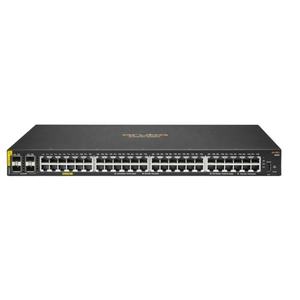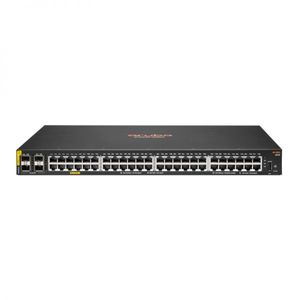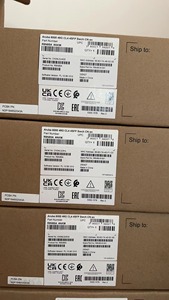(3111 products available)





































































































































































































































An internal power switch can be called a slide switch, mini switch, toggle switch, or SPDT (single pole double throw) switch. It is a type of power switch that is hidden inside a device, like a cell phone or remote control. It is used to turn the device on or off, usually by sliding a small lever or flipping a tiny toggle. Even though it is not visible on the outside of the device, the internal power switch is important for controlling the power state of the device.
Different types of internal power switches can be used for different applications:
Internal power switches have different specifications depending on their applications and use cases. Some of the common specifications include:
Switch Type
Slide switch: Slide internal power switches use a sliding mechanism to open and close the circuit. They have a slider on the surface of the switch that moves back and forth across different positions to turn the device on or off.
Tongue switch: Tongue switches are a type of internal power switch used in telecom equipment. They are used to provide emergency power or maintenance power when the main power circuit is interrupted or disconnected. They allow the equipment to be powered up internally, ensuring that critical functions and operations can be maintained even when the main power supply is interrupted.
Momentary push-button switch: A momentary push-button switch is an internal power switch that only closes the circuit while the button is being pressed. When released, the switch returns to its default open state, interrupting the circuit. They are typically used for functions like temporary signaling or reset.
Rocking switch: Rocking internal power switches are switches that turn on or off the electrical circuit using a rocking motion. They usually have two contacts that face in opposite directions and rock towards one another to make or break a connection.
Toggle switch: Toggle internal power switches are very popular in various applications. They are used in electrical circuits for power control. They have a lever that slides back and forth over different positions to turn the device on or off.
Rotary switch: Rotary internal power switches are used in various applications for established control over circuits. They have a rotating shaft with multiple positions corresponding to different circuits, allowing users to select a specific function or channel.
Push-pull switch: Push-pull internal power switches have a cylindrical switch element that is pushed in to turn the switch off and pulled out to turn the switch on. They are often used in applications where a compact control element is required.
Reed switch: A reed switch is an internal power switch that uses two ferromagnetic metal blades sealed in a glass envelope. The blades are separated and close to each other when a magnetic field is present, completing the circuit. They are commonly used in applications like proximity sensing and security systems.
Dip switch: A DIP switch is an internal power switch consisting of multiple individual switches in a small package. They are mounted on a circuit board and are used for configuration settings like address settings, option selections, and more.
Membrane switch: A membrane internal power switch is a thin, flexible switch layer with printed conductive traces. They are commonly used in portable devices, handheld devices, and medical devices.
Voltage and Current Rating
The voltage and current rating is a specification that determines the maximum voltage and current that an internal power switch can handle. This specification ensures that the switch is not damaged when higher voltage or current flows through it. The voltage rating is typically expressed in volts (V), while the current rating is expressed in amps (A).
Size and Form Factor
The size and form factor of the internal power switch determine its suitability for various applications and installations. They are available in different sizes and designs, from tiny switches for portable devices to larger switches for industrial applications.
Mechanical Life
Mechanical life refers to the number of operations an internal power switch can perform before exhibiting signs of wear or failure. The mechanical life is typically expressed in cycles, such as hundreds of thousands or millions of cycles.
Mounting Type
Internal power switches have different types of mounting methods depending on the type of switch and its application. Some common mounting methods include surface mounting, through-hole mounting, and panel mounting.
Contact Configuration
Contact configuration is a specification that defines how the contacts of an internal power switch are arranged and connected. The configuration determines the switching behavior and functionality of the switch. The common contact configurations include single pole single throw (SPST), double pole double throw (DPDT), and momentary contact configurations.
Operating Force
Operating force is the amount of force required to operate the switch and move it between different positions. The operating force is usually measured in grams or newtons. The operating force can affect the usability and tactile feedback of the switch.
Environmental Resistance
Internal power switches have different degrees of environmental resistance features. Environmental resistance refers to the switch's ability to withstand environmental factors like humidity, dust, moisture, and temperature extremes. Environmental resistance is a critical factor to consider when choosing an internal power switch for a specific application, especially in harsh environmental conditions.
Coating
Some internal power switches have a protective coating applied to the switch's external parts. The coating protects the switch from environmental factors like moisture, dust, and chemicals, enhancing its durability and reliability.
1. Internal power switches must be cleaned regularly to remove dust, dirt, or debris that may have accumulated on their surfaces. A dry cloth or soft brush is used to wipe the dust off the surface of the switches. Users can also use mild cleaning solutions to remove stubborn dirt or debris from the switches.
2. Users should periodically inspect internal power switches to identify potential issues or signs of wear and tear. They should also check the electrical connections to ensure they are secure and tight. Loose connections can cause intermittent power or increase the risk of switch failure.
3. It is important to operate internal power switches within their specified voltage and current ratings. Avoid overloading the switches with excessive voltage or current, as this can lead to overheating, damage, and reduced lifespan of the switches.
4. Users should avoid using excessive force when operating internal power switches. Using excessive force can lead to mechanical wear, damage, or failure of the switch over time.
5. Internal power switches are susceptible to moisture and humidity, which can cause corrosion and affect their performance. The switches should be kept in a dry environment and away from moisture and humidity.
Choosing an internal power switch involves considering several factors to ensure compatibility with the device, safety, and performance. Here are some tips:
Replacing the internal power switch can require some technical expertise, especially when dealing with internal components of a device like a computer. Here's a general guide for DIYers:
Q1. What is an internal power switch?
A1. An internal power switch is a control within a device that allows users to turn the power on or off without using an external button or switch. External power switches are often found on the outside of a device, while internal switches are located inside the device's circuitry or components.
Q2. Where are internal power switches commonly used?
A2. Internal power switches are commonly used in various electronic devices, including internal power switch laptop, smartphones, tablets, and other consumer electronics. They are also used in some automotive systems and industrial equipment to provide power control without external access.
Q3. What are the advantages of using internal power switches?
A3. Internal power switches offer several advantages, including:
Q4. How are internal power switches activated?
A4. Internal power switches are activated through various mechanisms depending on the device's design and internal power switch circuit. They may be activated by:
Q5. Can internal power switches be customized for specific applications?
A5. Yes, internal power switches can be customized and designed to meet specific requirements and functionalities for different applications. Internal power switch circuits can be tailored to control power to specific components or sections of a device, enabling more efficient power management.